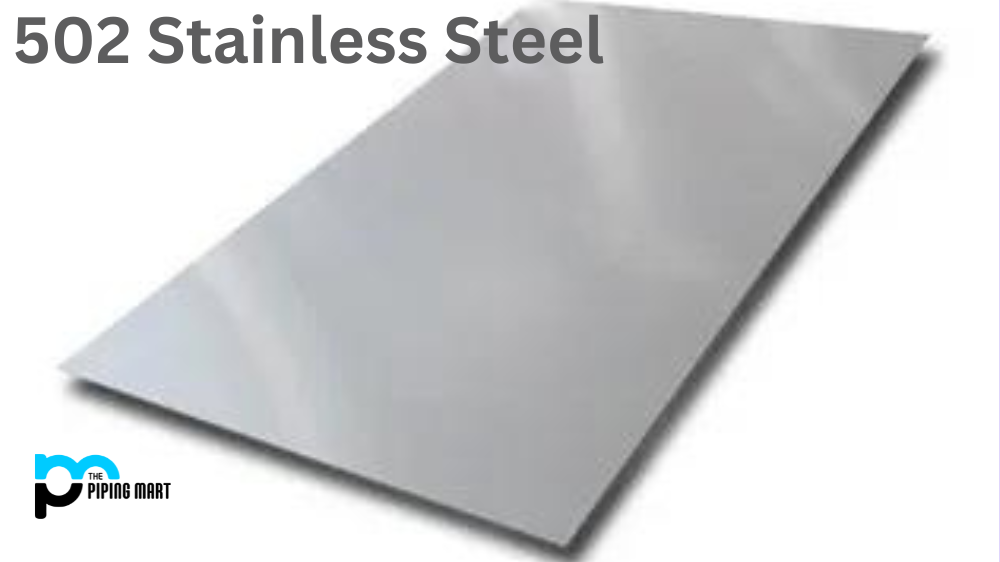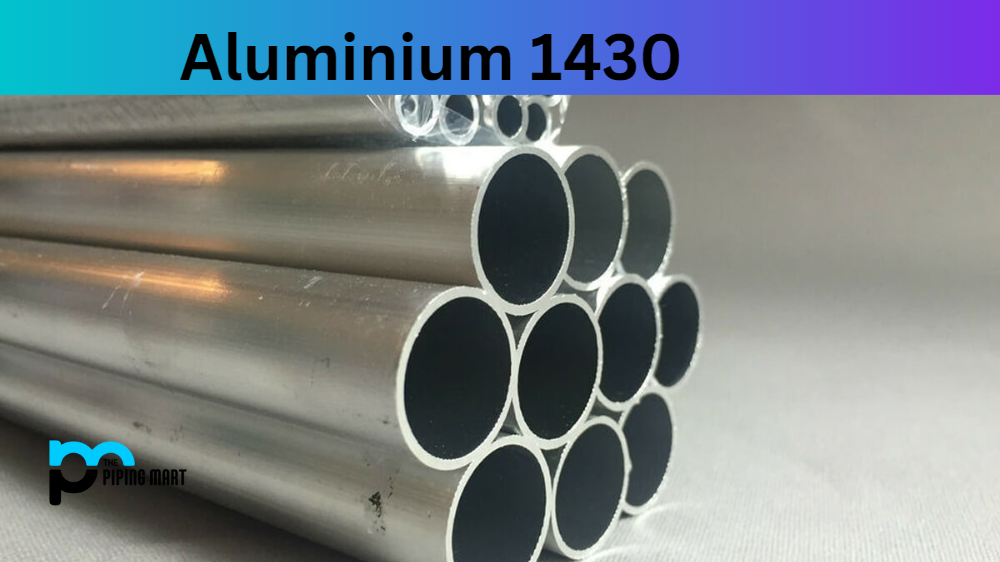Stainless steel is one of the most versatile materials, and 502 stainless steel is one of its popular types. This alloy is a martensitic stainless steel excellent for several applications, including cutlery, surgical tools, and pump shafts. In this blog post, we’ll explore the composition, properties, uses, and treatment of 502 stainless steel.
502 Stainless Steel Composition
502 stainless steel combines carbon, chromium, manganese, silicon, sulfur, and phosphorus. It also has a small amount of nickel and molybdenum, contributing to its corrosion resistance. The carbon content in the alloy ranges from 0.15% to 0.35%, while chromium content ranges from 11% to 13%. The manganese content in 502 stainless steel is around 1%, and the sulfur and phosphorus content are 0.03% and 0.04%, respectively.
| Element | Content (%) |
|---|---|
| Iron, Fe | 90.3 – 93.5 |
| Chromium, Cr | 4.0-6.0 |
| Manganese, Mn | 1 |
| Silicon, Si | 1 |
| Molybdenum, Mo | 0.40-0.65 |
| Carbon, C | 0.1 |
| Phosphorus, P | 0.04 |
| Sulfur, S | 0.03 |
502 Stainless Steel Mechanical Properties
The mechanical properties of 502 stainless steel are robust, with excellent strength, hardness, and wear resistance. The alloy’s tensile strength ranges from 620 to 950 Mpa, and its yield strength ranges from 310 to 690 Mpa. The hardness of this stainless steel is between 20-50 HRC, while its elongation ranges from 5% to 15%.
| Properties | Metric | Imperial |
|---|---|---|
| Elastic modulus | 190-210 GPa | 27557-30458 ksi |
| Poisson’s ratio | 0.27-0.30 | 0.27-0.30 |
502 Stainless Steel Physical Properties
502 stainless steel is a magnetic material with good physical properties. It has a density of 7.85 g/cm3, a melting point of 1420 -1510 degrees Celsius, and a thermal conductivity of 25 W/mK. The alloy has a specific heat capacity of 490 J/kgK and a coefficient of thermal expansion of 10.2 x 10-6 K-1.
| Properties | Metric | Imperial |
|---|---|---|
| Density | 7.7-8.03 g/cm3 | 0.2781-0.2901 lb/in3 |
502 Stainless Steel Equivalent
- AMS 6466
- AMS 6467
- ASTM A473
- AISI 502
- ASTM A314
- ASTM A472
- MIL T-16286
- SAE J405 (51502)
- ASME SA387 (5)
- ASTM A387 (5)
502 Stainless Steel Uses
Due to its excellent properties, 502 stainless steel is used in various applications. It is commonly used in manufacturing surgical and dental equipment, cutlery, and pump shafts. Due to its high-temperature strength, the alloy is also employed in high-temperature applications, such as gas turbine parts and automotive exhaust systems.
502 Stainless Steel Corrosion Resistance
502 stainless steel has good corrosion resistance due to its chromium and molybdenum content. The alloy is resistant to corrosion in mild and alkaline environments but susceptible to corrosion in acidic and chlorine environments. To prevent decay, the alloy can be coated with chromium, nickel, or titanium.
502 Stainless Steel Heat Treatment
Heat treatment is crucial to enhance the physical and mechanical properties of 502 stainless steel. The alloy can be hardened through quenching or tempering processes, which involve heating and cooling the metalwork to specific temperatures. Also, annealing reduces the alloy’s hardness and improves its machinability. The heat treatment process must be conducted carefully to avoid cracking and brittleness.
502 Stainless Steel Machining
Machining 502 stainless steel is possible but challenging due to its high hardness. Preheating the alloy before machining is advisable to reduce its hardness level. Also, it is essential to use suitable cutting tools that have sharp edges, a high rake angle, and a slow cutting speed.
502 Stainless Steel Welding
Welding 502 stainless steel can be challenging due to its high carbon and alloy content. Weldability is best enhanced by preheating the alloy before welding and using low-heat input and appropriate shielding gas.
Conclusion
In conclusion, 502 stainless steel is a popular alloy with remarkable properties. It has excellent mechanical properties, physical properties, and corrosion resistance, making it suitable for various applications. Knowing the alloy’s composition, properties, and treatment will help you make informed decisions.

Abhishek is a seasoned blogger and industry expert, sharing his insights and knowledge on various topics. With his research, Abhishek offers valuable insights and tips for professionals and enthusiasts. Follow him for expert advice on the latest trends and developments in the metal industry.




